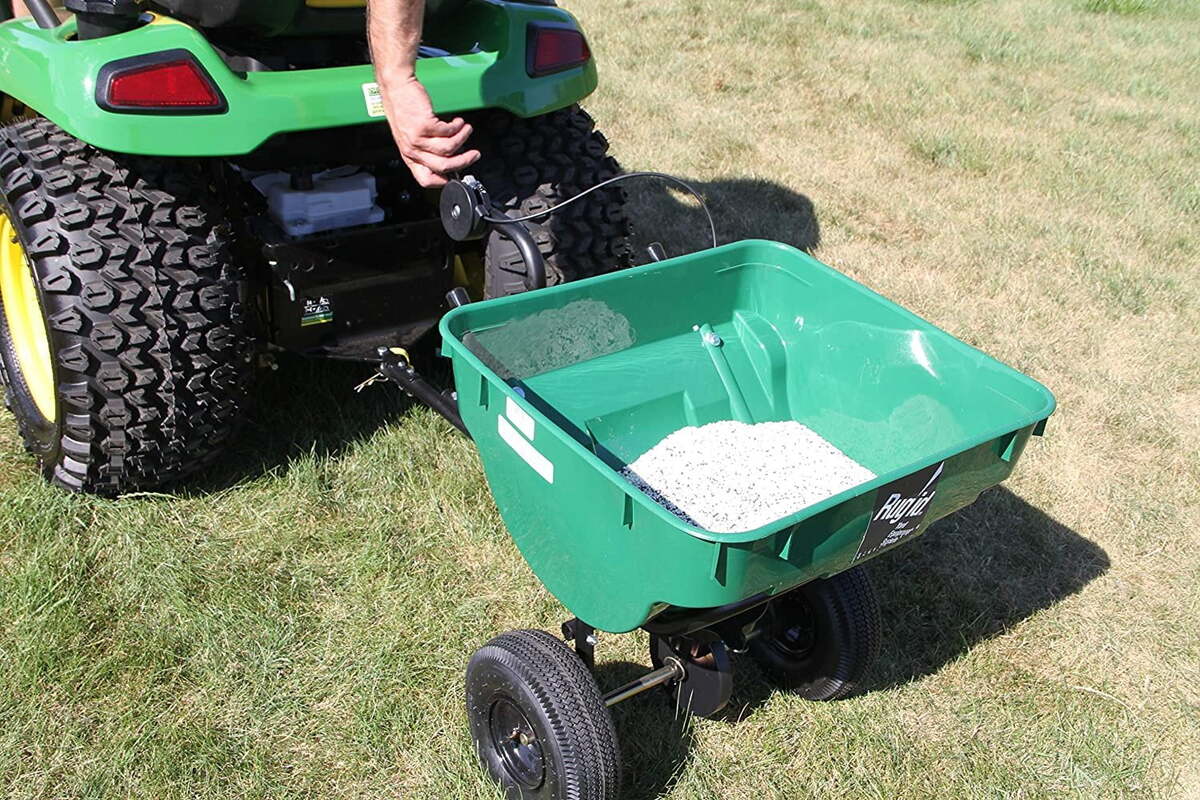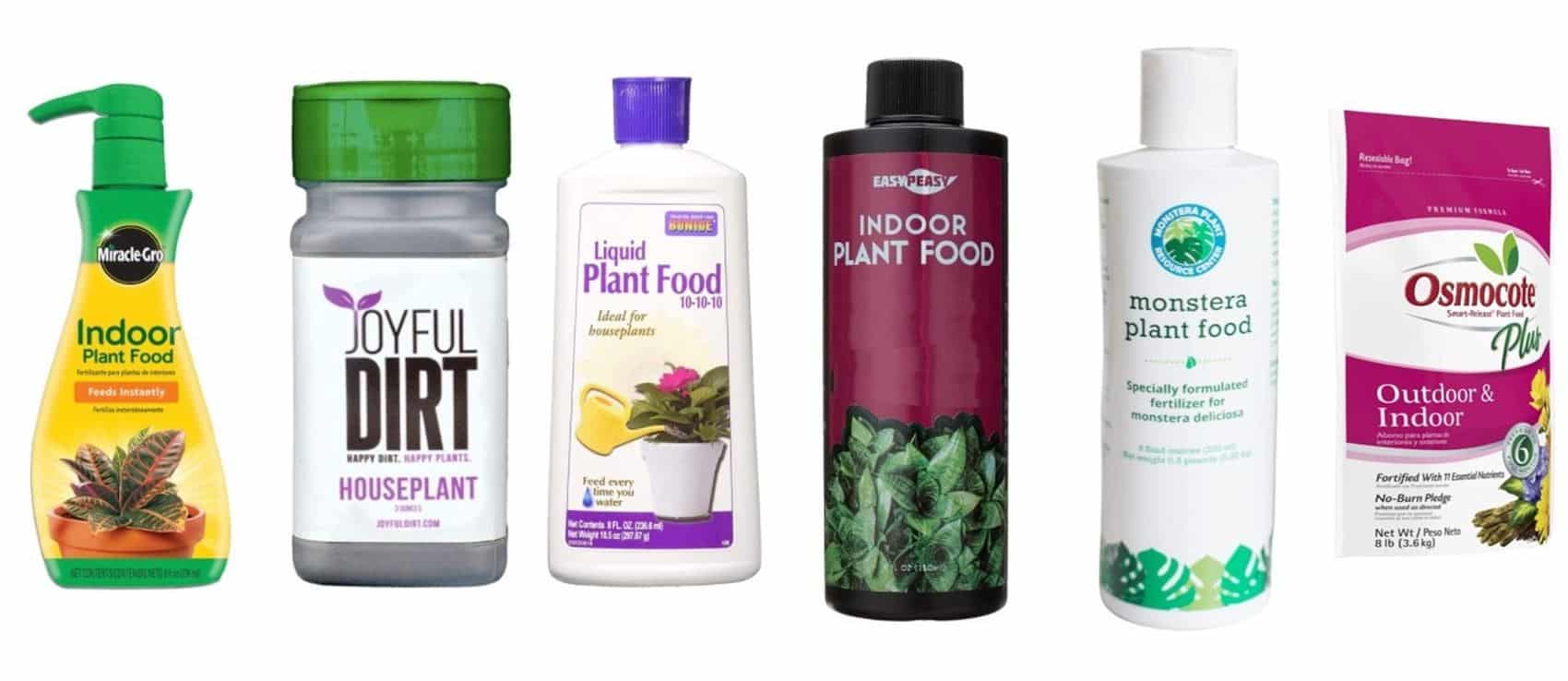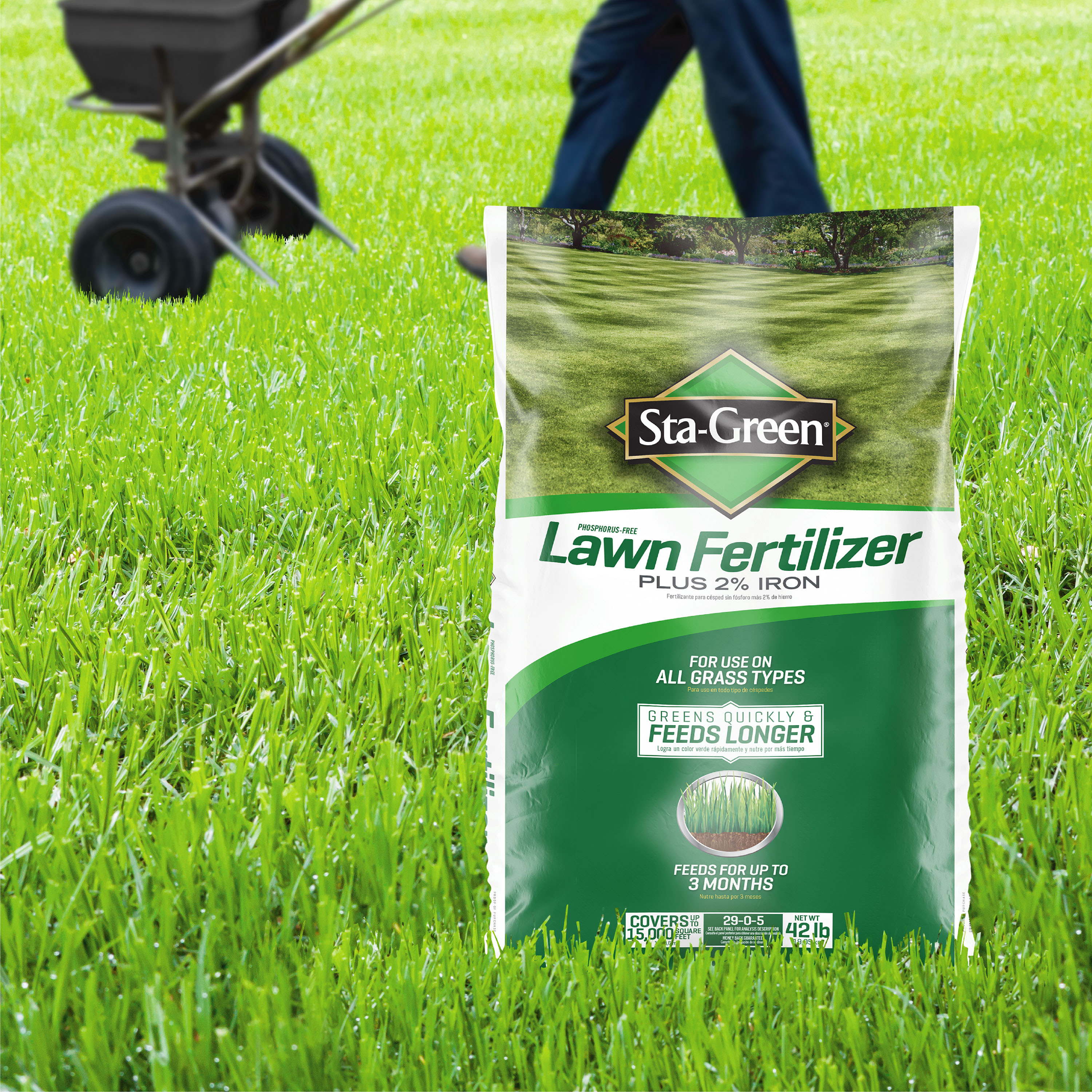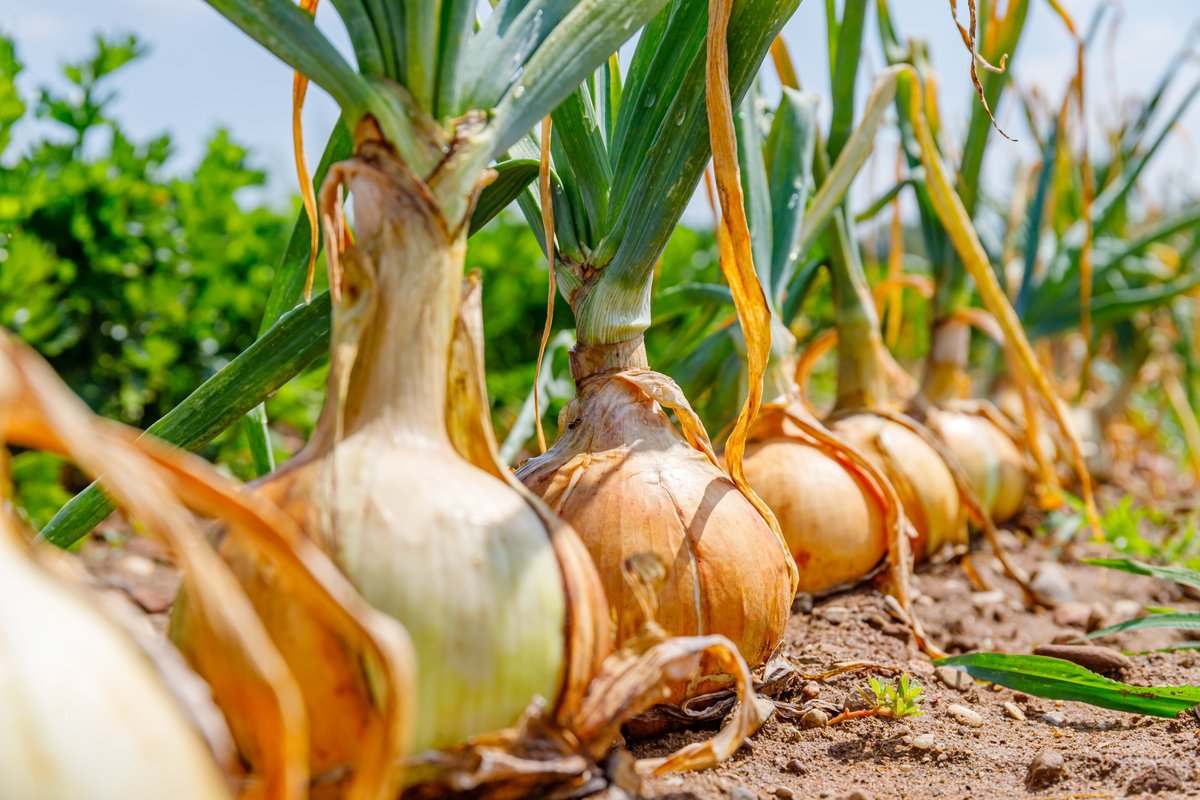Home>Reviews>Product Reviews>What Is The Best Fertilizer Spreader
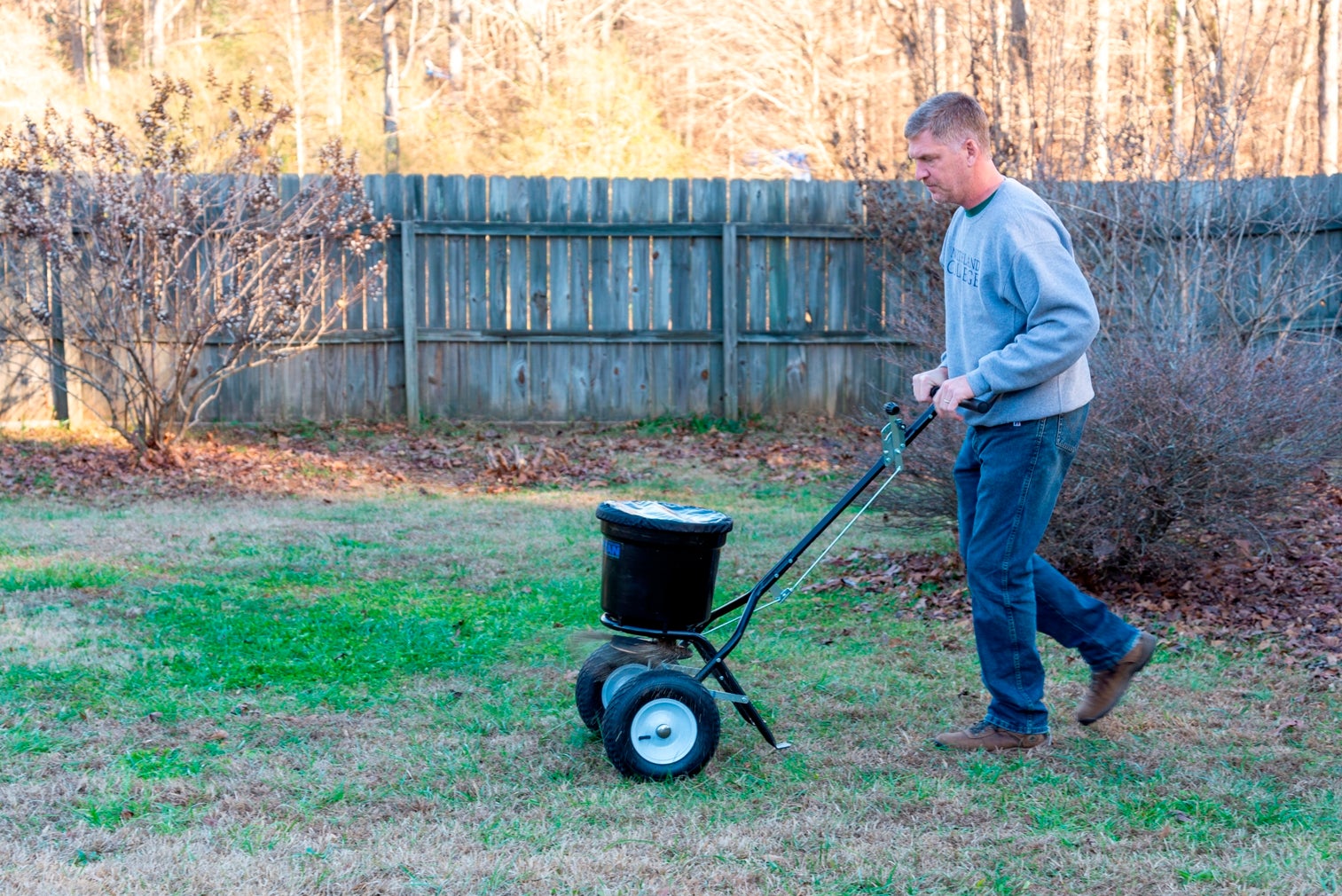

Product Reviews
What Is The Best Fertilizer Spreader
Modified: January 22, 2024
Looking for the best fertilizer spreader? Read our comprehensive product reviews to find the perfect one for your gardening needs.
(Many of the links in this article redirect to a specific reviewed product. Your purchase of these products through affiliate links helps to generate commission for Chicagolandgardening.com, at no extra cost. Learn more)
Table of Contents
- Introduction
- Factors to Consider When Choosing a Fertilizer Spreader
- Top Brands of Fertilizer Spreaders
- Comparison of Different Types of Fertilizer Spreaders
- Best Fertilizer Spreaders for Small Yards
- Best Fertilizer Spreaders for Large Yards
- Best Fertilizer Spreaders for Professional Use
- Maintenance Tips for Fertilizer Spreaders
- Conclusion
Introduction
Welcome to our comprehensive guide on choosing the best fertilizer spreader for your needs. Whether you have a small backyard garden or a sprawling lawn, a fertilizer spreader is an essential tool to ensure your plants get the nutrients they need to thrive.
But with so many options available on the market, it can be overwhelming to find the right one for you. That’s why we’re here to help. In this article, we’ll discuss the key factors to consider when choosing a fertilizer spreader, highlight the top brands in the industry, compare different types of spreaders, and provide specific recommendations for small yards, large yards, and professional use.
A fertilizer spreader is a device that evenly distributes fertilizer, seed, or other granular materials onto your lawn or garden. It ensures that the nutrients reach the plants in the right amount and in a uniform manner. This helps to promote healthy growth, prevent patchy areas, and save time compared to manual application.
When choosing a fertilizer spreader, there are several factors to consider. One of the first things to think about is the size of your yard. If you have a small yard, a handheld or shoulder-mounted spreader may be sufficient. However, for larger areas, a push or tow-behind spreader is recommended for efficiency and coverage.
Another important factor is the type of material you will be spreading. Some spreaders are designed specifically for fertilizer, while others can handle a variety of granular materials such as seeds, salt, or sand. It’s essential to choose a spreader that can accommodate the type of material you plan to use.
Other considerations include the spreader’s hopper capacity, spread width, and adjustable settings. These features will determine how much area you can cover in one pass and how evenly the material is distributed. The durability and quality of construction are also important factors to ensure the spreader will last for years to come.
In the next sections of this guide, we will provide in-depth information on each of these factors and help you make an informed decision. So, without further ado, let’s dive in and find the perfect fertilizer spreader for your needs.
Factors to Consider When Choosing a Fertilizer Spreader
Choosing the right fertilizer spreader can make a significant difference in the effectiveness and efficiency of your lawn and garden care. To ensure that you find the perfect spreader for your needs, there are several important factors to consider:
- Yard Size: The size of your yard will determine the type of spreader you need. For small yards, a handheld or shoulder-mounted spreader is ideal, as it provides greater maneuverability in tight spaces. However, for larger yards, a push or tow-behind spreader is more practical for covering large areas efficiently.
- Type of Material: Consider the type of material you plan to spread. While most spreaders can handle granular fertilizers, some are designed specifically for certain materials like seeds, salt, or sand. Make sure the spreader you choose is compatible with the material you intend to use.
- Hopper Capacity: The hopper capacity determines how much material the spreader can hold at a time. If you have a small yard, a spreader with a smaller hopper capacity may be sufficient. However, for larger yards, a larger hopper will save you time by reducing the frequency of refills.
- Spread Width: The spread width refers to the distance the spreader can cover with each pass. A wider spread width will allow you to cover more area in less time. Consider the size of your yard and the level of precision you desire when choosing a spreader with an appropriate spread width.
- Adjustable Settings: Look for a spreader with adjustable settings for controlling the rate and distribution of the material. This will allow you to customize the application based on the specific needs of your lawn or garden. Adjustable settings are crucial for achieving even coverage and preventing over-application.
- Durability: A spreader’s durability is vital for long-lasting performance. Look for a spreader made from sturdy and corrosion-resistant materials. Stainless steel or plastic hoppers and metal frames are common options. Additionally, consider the quality of the wheels, handles, and other components to ensure they can withstand regular use.
By taking these factors into account, you can make an informed decision when choosing a fertilizer spreader that will meet your needs and provide efficient and effective application of fertilizers and other granular materials. In the next sections, we will provide an overview of the top brands in the market and compare different types of fertilizer spreaders to help you make a well-rounded decision.
Top Brands of Fertilizer Spreaders
When it comes to choosing a fertilizer spreader, selecting a reputable brand can ensure that you are getting a high-quality product that will perform well and withstand the test of time. Here are some of the top brands in the fertilizer spreader industry:
- Scotts: Scotts is a well-known brand that offers a wide range of lawn care products, including fertilizer spreaders. They are known for their innovative designs and user-friendly features. Scotts spreaders are highly regarded for their durability and accuracy in material distribution.
- Earthway: Earthway is another popular brand that specializes in spreaders for both residential and commercial use. They offer a variety of push, tow-behind, and handheld spreaders known for their precision spreading, sturdy construction, and ease of use.
- Agri-Fab: Agri-Fab is a leading manufacturer of lawn and garden equipment, including fertilizer spreaders. They offer a wide range of spreaders with varying capacities and features. Agri-Fab spreaders are valued for their durability, versatility, and excellent spreading performance.
- Chapin International: Chapin International is known for its high-quality sprayers and spreaders. They offer a diverse selection of spreaders suitable for different applications and yard sizes. Chapin spreaders are built to last and provide consistent and even distribution of materials.
- Solo: Solo is a trusted brand that specializes in handheld spreaders. They are known for their lightweight and easy-to-use spreaders, making them ideal for small yards or areas with limited access. Solo spreaders are appreciated for their ergonomic design and precision application.
These top brands have established a strong reputation in the market for producing reliable and efficient fertilizer spreaders. It is worth considering their products when choosing a spreader for your lawn and garden care needs. Remember to evaluate the specific features, capacities, and design of each brand’s spreaders to find the one that aligns with your requirements.
Comparison of Different Types of Fertilizer Spreaders
When it comes to fertilizer spreaders, there are several different types available, each with its own advantages and limitations. Understanding the differences between these types can help you make an informed decision based on your specific needs. Let’s explore the different types of fertilizer spreaders:
- Handheld Spreaders: Handheld spreaders are small, portable devices that are operated manually. They are ideal for small yards or areas with limited access. Handheld spreaders are lightweight and easy to use, allowing for precise application in tight spaces.
- Shoulder-Mounted Spreaders: Shoulder-mounted spreaders are similar to handheld spreaders but are strapped onto the user’s shoulder for increased comfort and extended use. They are commonly used for larger areas than handheld spreaders but still offer good maneuverability.
- Push Broadcast Spreaders: Push broadcast spreaders are wheeled spreaders that are pushed manually. They are designed to distribute fertilizer in a wide, fan-like pattern, making them ideal for medium to large-sized yards. Push spreaders are efficient and allow for quick coverage of a larger area.
- Tow-Behind Spreaders: Tow-behind spreaders are attached to a lawn tractor or a utility vehicle and are pulled behind. They have a larger hopper capacity, wider spread width, and can cover much larger areas compared to handheld or push spreaders. Tow-behind spreaders are commonly used for large lawns, sports fields, and commercial applications.
- Drop Spreaders: Drop spreaders deposit granular material directly onto the ground in a precise and controlled manner. They are best suited for smaller areas that require accurate distribution, such as flower beds and areas near sidewalks or driveways. Drop spreaders are less prone to drift, which can occur with broadcast spreaders.
Each type of spreader has its own advantages and considerations. Handheld and shoulder-mounted spreaders are suitable for smaller yards and offer easy maneuverability. Push and tow-behind spreaders are more efficient for larger areas, while drop spreaders provide precise application for specific areas. The choice will depend on the size of your yard, the level of accuracy required, and your personal preference.
Remember to consider other factors such as hopper capacity, spread width, adjustability, and durability when comparing different types of spreaders. By understanding the pros and cons of each type and finding the one that best fits your needs, you can ensure effective and efficient fertilization of your lawn or garden.
Best Fertilizer Spreaders for Small Yards
If you have a small yard, finding the right fertilizer spreader can make a significant difference in maintaining a healthy and beautiful lawn or garden. Here are some top recommendations for the best fertilizer spreaders for small yards:
- Scotts Wizz Handheld Spreader: The Scotts Wizz Handheld Spreader is a convenient and efficient option for small yards. It features a battery-powered design that allows for effortless spreading. The Wizz Spreader boasts an adjustable spread width and a 5-foot broadcast range, ensuring even coverage of your lawn or garden.
- Earthway 3400 Hand Crank Spreader: The Earthway 3400 Hand Crank Spreader is a reliable choice for small to medium-sized yards. This compact spreader features a hand crank mechanism for easy operation. It has an adjustable spread rate and a 15-pound capacity, making it suitable for small yard applications.
- Agri-Fab 45-0462 Push Broadcast Spreader: The Agri-Fab 45-0462 Push Broadcast Spreader is a versatile option that can accommodate both small and medium-sized yards. It features a durable construction, a 130-pound hopper capacity, and an adjustable spread width. The pneumatic tires provide stability and maneuverability on various terrains.
- Chapin 8701B Garden Push Spreader: The Chapin 8701B Garden Push Spreader is an affordable and compact option for small yards. It has a 35-pound capacity and adjustable settings for precise application. The sturdy construction and ergonomic handle make it easy to use and maneuver.
- Solo 421 Portable Chest-Mount Spreader: The Solo 421 Portable Chest-Mount Spreader is a unique and convenient choice for small yards. It can be worn using a comfortable chest strap, allowing for hands-free spreading. The spreader has a 20-pound capacity and adjustable settings for accurate distribution.
These fertilizer spreaders offer great performance and convenience for small yard applications. When choosing the best spreader for your needs, consider factors such as hopper capacity, spread width, adjustability, and ease of use. Additionally, keep in mind the specific requirements of your lawn or garden to ensure that you achieve the desired results.
Remember to follow the manufacturer’s instructions for proper calibration and maintenance of your fertilizer spreader to maximize its lifespan and efficiency. With the right spreader, you can efficiently and effectively fertilize your small yard, promoting healthy growth and vibrant greenery.
Best Fertilizer Spreaders for Large Yards
If you have a large yard, using the right fertilizer spreader is essential for efficient and effective coverage. Here are some top recommendations for the best fertilizer spreaders for large yards:
- Agri-Fab 45-0463 Tow Broadcast Spreader: The Agri-Fab 45-0463 Tow Broadcast Spreader is a high-capacity spreader designed for large yards. It has a 130-pound hopper capacity and a 10 to 12-foot spread width. This tow-behind spreader is compatible with lawn tractors and utility vehicles, enabling quick and effortless spreading over larger areas.
- Brinly BS36BH Tow-Behind Broadcast Spreader: The Brinly BS36BH Tow-Behind Broadcast Spreader is engineered for durability and efficiency. It has a 175-pound capacity and an impressive 12-foot spread width. The large pneumatic tires and robust construction make it suitable for heavy-duty use on large and uneven terrains.
- John Deere LPBS36JD Tow-Behind Broadcast Spreader: The John Deere LPBS36JD Tow-Behind Broadcast Spreader is a reliable choice for large yards. With a 175-pound capacity and a 12-foot spread width, it can cover a significant area in a single pass. It is built with a robust design and features high-quality components for long-lasting performance.
- Earthway 2150 Commercial Tow Spreader: The Earthway 2150 Commercial Tow Spreader is designed for professional and commercial applications on large yards. It has a 50-pound capacity and a 12-foot spread width. This spreader is built with commercial-grade materials and features a heavy-duty gearbox, making it strong, durable, and reliable.
- Lesco High Wheel Fertilizer Spreader: The Lesco High Wheel Fertilizer Spreader is a popular choice among professional landscapers. It has a 80-pound capacity and a 12-foot spread width. This push spreader is known for its robust construction, large pneumatic wheels, and precise material distribution, making it ideal for large yards and professional use.
These fertilizer spreaders for large yards offer high capacity and wide spread widths to help you efficiently cover extensive areas. When selecting the right spreader for your large yard, consider factors such as hopper capacity, spread width, durability, and compatibility with your existing equipment.
It is important to properly calibrate and adjust the spreader settings according to the manufacturer’s guidelines to ensure accurate and even distribution of the fertilizers or granular materials. Regular maintenance and cleaning of the spreader will help prolong its lifespan and optimize its performance.
By choosing the best spreader for your large yard, you can save time and effort while achieving consistent and effective fertilization, resulting in a healthy and lush lawn or garden.
Best Fertilizer Spreaders for Professional Use
For professionals in the lawn care and landscaping industry, having a reliable and high-performance fertilizer spreader is crucial for ensuring efficient and precise application. Here are some top recommendations for the best fertilizer spreaders for professional use:
- Earthway 2050TP Estate Broadcast Spreader: The Earthway 2050TP Estate Broadcast Spreader is designed for professional use. It features a large 80-pound capacity and a professional-grade gearbox for optimal performance. The spreader has a 10 to 12-foot spread width and a robust construction to withstand heavy-duty application on various terrains.
- Lesco 101186 High Wheel Walk-Behind Fertilizer Spreader: The Lesco 101186 High Wheel Walk-Behind Fertilizer Spreader is a professional-grade spreader with a 100-pound capacity. It offers a wide 13-foot spread width, allowing for quick and efficient coverage. The spreader is known for its durability, accuracy, and ease of use.
- Agri-Fab 45-0462 Push Broadcast Spreader: The Agri-Fab 45-0462 Push Broadcast Spreader is suitable for both residential and commercial use. It has a 130-pound hopper capacity and an adjustable 10 to 12-foot spread width. This spreader features a sturdy construction and high-quality components, ensuring durability and consistent performance even in demanding environments.
- Chapin 8400C Commercial Chest-Mount Spreader: The Chapin 8400C Commercial Chest-Mount Spreader is a professional-grade spreader that allows for hands-free operation. It has a 100-pound capacity and an adjustable spread rate for precise application. With its comfortable and ergonomic design, this spreader is ideal for professional landscapers who need to cover large areas efficiently.
- Lesco High Wheel Fertilizer Spreader: The Lesco High Wheel Fertilizer Spreader is a popular choice among professionals in the lawn care industry. It has an 80-pound capacity and a 12-foot spread width. This spreader is known for its durability, maneuverability, and accurate material distribution, making it an excellent choice for commercial applications.
These fertilizer spreaders for professional use offer high capacities, wide spread widths, and durable construction to meet the demands of commercial landscaping. When selecting a spreader for professional use, consider factors such as hopper capacity, spread width, durability, ease of use, and compatibility with your specific requirements and equipment.
Proper maintenance, regular cleaning, and precise calibration of the spreader are crucial to ensure accurate and consistent application. Following the manufacturer’s guidelines and recommendations will help you achieve optimal performance and maximize the lifespan of your professional fertilizer spreader.
By investing in a reliable and efficient spreader designed for professional use, you can enhance the productivity and effectiveness of your lawn care or landscaping business, providing clients with outstanding results and maintaining a competitive edge.
Maintenance Tips for Fertilizer Spreaders
Maintaining your fertilizer spreader is essential to ensure its optimal performance and longevity. By following these maintenance tips, you can keep your spreader in excellent condition and achieve consistent and accurate application:
- Clean After Each Use: After each use, thoroughly clean your spreader to remove any remaining fertilizer or granular material. This prevents clogging and buildup, ensuring unrestricted flow during the next application. Use a brush or hose to remove any residue and ensure that all components are free from debris.
- Inspect and Lubricate: Regularly inspect your spreader for any signs of damage or wear. Check the gears, axles, wheels, and other moving parts to ensure they are functioning properly. Lubricate any necessary areas according to the manufacturer’s recommendations to reduce friction and prevent rust or corrosion.
- Calibrate Regularly: Calibration is crucial to ensure accurate and even distribution of fertilizers or granular materials. Regularly check and calibrate your spreader to match the desired application rate. Adjust the spreader settings as needed to achieve the appropriate coverage for your lawn or garden. Consult the user manual or manufacturer’s guidelines for the correct calibration procedure.
- Store Properly: When not in use, store your spreader in a clean and dry area. Protect it from extreme temperatures and moisture to prevent rust or damage. If possible, disassemble removable parts and store them separately. Proper storage helps extend the lifespan of your spreader and maintains its performance.
- Replace Worn or Damaged Parts: Regularly inspect the components of your spreader, including the hopper, wheels, and handle. Replace any worn or damaged parts promptly to avoid further issues. This includes replacing worn-out tires, broken gears, or cracked hoppers. Using damaged parts can affect the spreader’s performance and accuracy.
- Follow Manufacturer’s Guidelines: Always refer to the manufacturer’s guidelines for specific maintenance instructions and recommendations for your spreader model. Different spreaders may have unique requirements, so it is important to follow the manufacturer’s instructions to ensure proper care and maintenance.
By following these maintenance tips, you can keep your fertilizer spreader in excellent condition and ensure consistent and effective application of fertilizers or granular materials. Regular cleaning, inspection, calibration, and proper storage will help prolong the lifespan of your spreader and maintain its performance for years to come.
Remember to consult the user manual or contact the manufacturer if you have any specific questions or concerns about the maintenance of your spreader. Proper maintenance not only enhances the longevity of the spreader but also ensures that your lawn or garden receives the correct amount of nutrients for healthy growth and vibrant greenery.
Conclusion
Choosing the right fertilizer spreader is essential for effectively and efficiently applying nutrients to your lawn or garden. By considering factors such as yard size, type of material, hopper capacity, spread width, and adjustability, you can find a spreader that suits your specific needs.
In this comprehensive guide, we discussed the key factors to consider when choosing a fertilizer spreader and provided recommendations for different yard sizes and professional use. Whether you have a small yard or a large commercial space, there is a spreader available to meet your requirements.
We also highlighted some of the top brands in the market, such as Scotts, Earthway, Agri-Fab, Chapin, and Solo, known for their quality and performance in the fertilizer spreader industry.
To ensure the longevity and optimal performance of your spreader, it is essential to follow proper maintenance practices. Regularly cleaning the spreader, inspecting for any damages or wear, lubricating moving parts, and calibrating the spreader for accurate application are key maintenance tasks to keep in mind.
Remember always to consult the manufacturer’s guidelines for specific maintenance instructions and recommendations for your spreader model.
With the right fertilizer spreader and proper maintenance, you can provide your lawn or garden with the necessary nutrients for healthy growth and vibrant greenery. Take the time to choose a spreader that aligns with your needs, and enjoy the benefits of efficient and effective fertilizer application.
